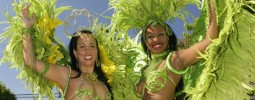Espoo is the second largest city in and municipality in Finland, after Helsinki. Espoo is part of the Helsinki Metropolitan Area along with the following cities; Helsinki, Vantaa and Kauniainen and is located close to the shore of the Gulf of Finland, in the province of Southern Finland and the region Uusimaa. The city has a population of 243 thousand people as of latest measurement.
The city of Espoo still has a quite original and urban structure visible throughout the city center, which is split apart in 5 districts. Each of the districts are as large as a regular sized Finnish town and perfectly well connected through public transport. Also the Nuuksio National Park can be reached through public transport, from pretty much every station it’s fine to walk to your final destination.
The most popular out of the 5 districts is probably Tapiola for its carefully designed gardens, spacious parks and architecture are in harmony with each other. The high tech city parts are reachable within just 15 minutes and shows interesting sightseeing including museums and festivals, of course the April Jazz festival and Espoo Ciné International Film Festival are the most well known reasons for repeatedly tourist visits to Espoo.
The Espoo skyline is a mix of old and new, in between some historical buildings and museums there’s various high tech buildings visible including the Nokia world headquarters, the headquarters of Fortum and the Helsinki University of Technology. Elsewhere if you are looking to have a fine dining experience, there’s restaurants and small eat cafes divided all over town, small horeca places which will serve food and have a bar to sit at. Local Finnish cuisine is popular, but international meals are also served.
American and European citizens are required a valid passport for entry to Espoo, when staying for less than 90 days there is no need to apply for a visa. No vaccinations are required either for entry into Finland. If you are from Africa, Asia, North America or South America you’re required to contact your embassy before leaving. The best time to visit Finland and Espoo are in the summer from June to August.
Helsinki, the capital of Finland, is the economic capital of Scandinavia. From its humble origins as a small fishing town on the coast of the Baltic Sea, it has now grown into a bustling metropolis, the most populous city in Finland, and is the country’s cultural, economic, and communications hub. Lovingly referred to as “the daughter of the Baltic,” Helsinki is famous for its coastlines which are dotted by ports and secluded coves.
Ferries glide into Helsinki’s ports every day, and watching one as it softly makes its way to the harbor is something that no visitor to the city should ever miss. The city is also the perfect place to marvel at neoclassical architecture, as exemplified by buildings around the Senate Square. The city’s countless waterways are perfect for romantic or leisurely strolls and are an all-time favorite of locals and visitors alike. Travel back in time and discover the city’s past by visiting various museums or marvel at the interesting mix of modern and traditional structures that sit comfortably beside each other. English is widely spoken so there should be no trouble communicating with the locals.
Getting around Helsinki can be done by bus or by walking, which can be a good idea since the city is relatively small. Going around by car is discouraged because of the difficulty in finding a good parking space. Safety is of no concern in Helsinki, which has been named the second safest city in the world. Pickpockets and thieves can be encountered in crowded areas but visitors can be kept safe if they carry wallet or purses in their front pockets and refrain from staying in dark or dimly lit areas.
Americans require a valid passport for entry to Helsinki but they are not required to present a visa for stays that last up to 90 days. No vaccinations are required for entry into Finland.








